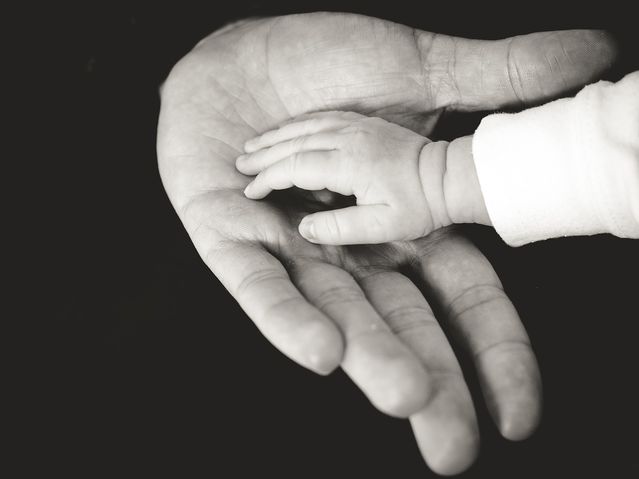Neuroscience
Wired to Connect: Our Nervous System Notices Harm First
Subtle coercion in a relationship is hard to see, but easily felt in the body.
Posted December 14, 2018

Our experience with an intimate partner over time can shape how we feel and how we cope both in the relationship and outside the relationship. In the end, our primary relational experience has a significant impact on our nervous system and the overall quality of our lives.
Individuals who endure psychological abuse often don’t recognize the subtle coercive tactics embedded in their intimate partner’s behavior. However, their nervous system does and these felt reactions are the best clues.
Your Nervous System Is the First to Know
Recently, I attended a fascinating workshop by Deb Dana, a polyvagal theory educator and therapist, on the autonomic nervous system, addressing how we are wired to survive while at the same time longing to connect with others. The rhythm of how we move through shifts within “a continuous cycle of mobilization, disconnection, and engagement” (Dana, 2018) is unique and natural for each of us.
It’s our nervous system that conveys signs and searches for signs of either safety or danger in our environment. At the same time, we regulate—fixing or adjusting—our nervous system, often unknowingly but necessary to our sense of wellbeing. Regulating our nervous system happens in two ways: we co-regulate with another person and we self-regulate.
In an intimate relationship, we can successfully co-regulate with another when we have an experience from the interaction of feeling safe. When a rupture occurs such as a conflict, we move out of connection; then, with a repair such as a resolving the conflict, we return to the safe emotional connection. A positive sensation is experienced in our body where we can feel calm, grounded, and secure. We might feel this in close friendships or with a best friend. Disruptions in this emotional connection are a given with the ebb and flow of life, but there’s a trust that develops that reengagement can and will take place.
When we’re feeling threatened in an interaction, our nervous system reacts by giving us a signal to protect ourselves. Once we move into self-protection, we move out of connection with the other. It’s this condition where individuals with an emotionally abusive partner will find themselves most or all of the time. In this state of self-protection, we need to rely on self-regulating our nervous system. Co-regulation with a partner is not an option.
Survival Mode Becomes Constant When Safety Is Lost
I’ve worked with survivors of abusive relationships (mostly non-physical) for over two decades, during which time I’ve collected harmful behaviors they experienced from their partners and identified symptomatic conditions they hold in their body as a result. Two survival conditions that develop over time are derived from a protective stance that can become the norm when one is with an intimate partner who coerces or abuses.
Hypervigilance
When a partner uses one or more of the following abuses—psychological, emotional, verbal, or physical—to achieve power and control in the relationship, feeling scared and a sense of danger are expected by the targeted person. Fear and anxiety cause dis-regulation to our nervous system, leaving you to feel vulnerable with a strong need to protect yourself. One way might be to become more vigilant of your partner and his behavior, in an effort to anticipate ways to have a reprieve, avoid pain, and calm yourself. Another way might be to suppress thoughts and feelings such as concerns or anger, since speaking about them could lead to an abusive reaction that one has endured in the past. The result to your nervous system can be anxiety, depression, low mood, shame, low self-esteem, loss of trust in your own perception, and loss of agency—control over your own life.
Freeze Response
When you experience ongoing control and abuse from an intimate partner, you’ll feel fear or terror. When fear becomes chronic, you’re likely to develop trauma. Trauma reactions are often fight, flight, or freeze. When you’re with an abusive intimate partner, you don’t have the option to “fight” because your instinct is that you don’t have the power to overcome your partner; you can’t take “flight” in the moment and run—escape your partner—for you expect to be in greater danger if you do. The predominant trauma response often with an abusive partner is to “freeze.” The freeze response is to implode—you become shut down, immobilized, and feel numb to dissociate from the pain. It’s the best you can do to get through the moment or the day. In “freeze,” you experience confusion and a “brain fog” that’s an inability to concentrate or think or reason clearly making you more vulnerable to your partner. In the extreme, your nervous system shuts down and you go into a state of collapse.
Seek Safety and Connection To Regulate Your Nervous System
The way back to a sense of wellbeing is to feel safe. All efforts at recovery have to do with ways to achieve safety. Taking action of some kind can help to mobilize yourself and regain control. Here are a few ideas of things you can do in the service of self-regulating:
- Know that abusive behavior is not the fault of the targeted person but solely the responsibility of the abuser.
- In a freeze response, movement can help you get unstuck and return to a felt sense in your body. Take a walk and be mindful of each step, do yoga, jump up and down, throw a ball against a wall and catch it, etc.
- Learn about the subtle coercive tactics embedded in a partner’s behavior so you can understand and identify what is going on and have choices about how to respond.
- Develop a safety plan for when the abuse escalates and you’re prepared to take action. Just having a plan in place can increase a sense of safety. (Find resource at the end of this blog.)
- Be prepared to call 911 if you’re at risk of or endure physical violence.
Moving Out of Isolation Into Co-regulating with Another
With an abusive partner, social isolation is common. Since we are wired to not only survive but to connect, not being isolated is critical to feeling better. Recognize that feelings of shame, humiliation, and self-blame are normal reactions to being abused while at the same time not letting these feelings interfere with reaching out to others. Find someone to speak to—a friend, a family member, a therapist, etc.— who you can trust and speak the truth to. This emotional connection can offer understanding, support, and care—helping co-regulate your nervous system. You’ll begin to feel less alone a necessary step toward calming and grounding yourself and motivating yourself moving forward.
With an abusive partner, it most likely requires getting your nervous system regulated in ways that lead to feeling emotionally stronger—in the best position to decide what to do or see what’s possible with your relationship.
The National Domestic Violence Hotline offers safety planning—all calls are confidential. 1-800-799-SAFE (7233), www.thehotline.org
©Lambert
References
Deb Dana, LCSW, "Polyvagal Theory in Therapy: Practical Applications for Treating Trauma." Presentation at the Cape Cod Institute, July 2018.




